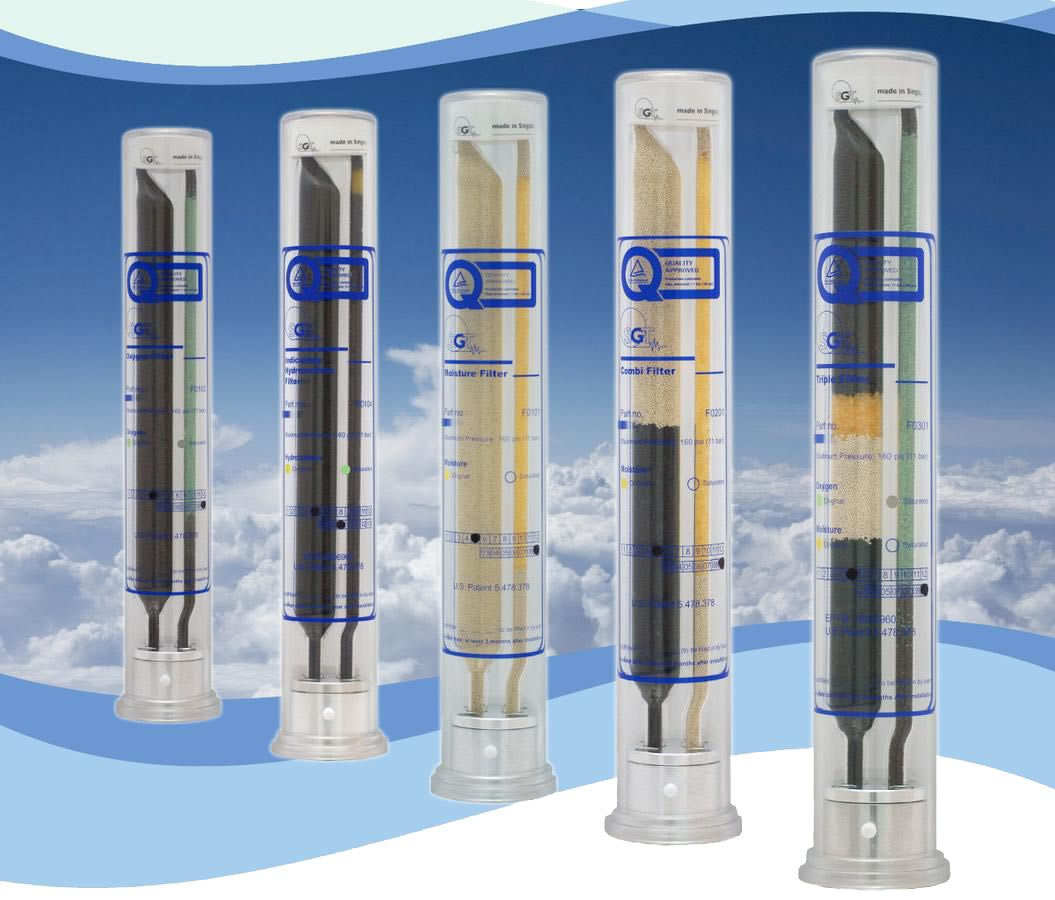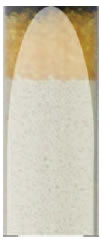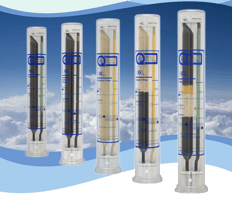Syringe filters are important tools in chromatography that often go unnoticed. These filters are...
Why you should replace your Gas Clean Filters annually
This article explains why it is important to replace your gas filters annually instead of waiting for the
indicators to change colour.

Filter Media Types
A typical GC/MS laboratory gas filter system contains three types of filtering media:
- Oxygen Catalyst for absorbing traces of oxygen
- Activated Carbon for adsorbing hydrocarbons
- Molecular Sieve for adsorbing moisture
These filter media types can be divided into two groups:
|

|
|

|
Filter Media Breakthrough Indicators
|
The visual indicators are mainly for urgent situations such as a leak or high amount of impurities breaking through.
|

|
Filter Media Breakthrough
Both adsorption and absorption media have fixed capacities, meaning they hold just so much, since they are storing the material removed from the gas, not destroying it.
Normal situation

Hydrocarbon Breakthrough
Over time, the empty holes of the carbon fill up. The molecules that are adsorbed with higher energy, sort of like weighing more, can displace the lower-energy molecules that are less tightly held, leading to molecular musical chairs. This phenomenon, called displacement, may knock the olds ones off the media, straight to the column & instrument.

Moisture Breakthrough
The molecular sieve adsorbs moisture until it cannot adsorb anymore. If the humidity level of the gas is lower than in the molecular sieve, it will de-adsorb its moisture until it is in "balance" with the lower humidity level of the gas, which means the filter could increase the amount of moisture in your gas.

Oxygen Breakthrough
The media size increase equals the amount of material removed. When the media has reached its absorption capacity it will not release the already trapped contaminants but it will also not absorb any new ones.

The Sound Bite
Replace your filter before the indicator start changing colour to prevent breakthrough and to avoid high maintenance and repair cost of your instrument
As explained in the previous page, filters which are not maintained on a regular interval will cause the outgoing gas to become more contaminated then the original source gas.
The colour indicators used in gas filters are so called ‘last minute’ indicators and require quick action.
 |
You can compare it to the engine oil indicator in your car. When the engine oil indicator is blinking on your dashboard, the car should not be driven and ignition be switched off unless topped with Engine Oil - In event of taking risk to drive - high probability of Engine getting seized causing high expenditure to repair or replace the engine. |
The same is valid for gas filters. When one of the indicators start to change colour, the filter should not be used and instrument be switched off unless the filter is immediately being replaced with a new one - In event of taking risk to continue – there will be a high probability of contaminants breakthrough causing high expenditure on instrument maintenance as compared to planned annual preventive maintenance on your instrument and gas filters.
So what can you do as an end-user is to always buy an additional set of filters to keep on standby in case the indicator starts changing colour or to use a good preventive maintenance plan or tool (such as the electronic indicator) to replace your filters at least once a year.
More than 80% of instrument and column complaints are carrier gas related which could be caused by breakthrough from filters that are not replaced in time.
The possible consequences of a filter breakthrough are:
- Gas distribution system behind the filter will be contaminated (fast cleaning nearly
impossible, bleeds for months) - Instrument gets contaminated , expensive maintenance required
- Column lifetime reduced, bad analytical results , high cost of ownership, unnecessary
changing of column brands - MS source gets contaminated, expensive maintenance required, long system shutdown






